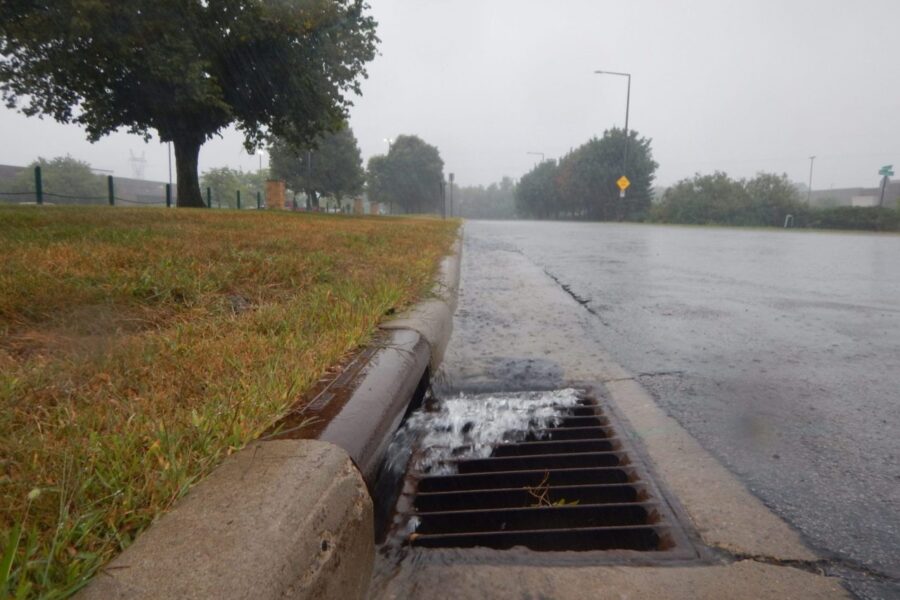Water, Weather & Environment
Tracking nutrients & pollutants from lawns to the lakes

Great Lakes watershed district monitors stormwater & water quality in freshwater lakes
Based in the Minneapolis-St. Paul, Minnesota area, the Capitol Region Watershed District (CRWD) protects and manages wetlands, creeks, lakes and part of the Mississippi River Basin by managing stormwater runoff in a densely urbanized watershed. The existing database housing CRWD’s stormwater monitoring data was adequate but the district had more aggressive goals to better analyze the data, in order to identify source contaminants and make overall decisions for improved water quality. With an ever-growing dataset of continuous flow and water quality data, calculating pollutant loads efficiently as well as consistently to inform those management decisions would constrain operational performance. With WISKI, the District was able to produce a more timely, accurate and consistent process to measure pollutants and enable water resource professionals to focus on water quality improvement solutions.
- The challenge
- The solution
- The benefits
The challenge
The challenge
To determine how chemicals such as phosphorus enter urban lakes and streams from pollutant-laden stormwater runoff, CRWD gathers data in two ways. Sensors measure the flow of stormwater in tunnels and automatic samplers extract flow-paced samples during events to be analyzed by a lab. Staff manually identified start and stop of storm events and computed the total volume of water for each event.
Annual pollutant load calculations were then manually calculated to quantify the total amount of constituents in various water bodies during dry weather conditions and storm events. Multiplying the total volume by the concentration of a pollutant from lab analyses resulted in the total amount of the pollutant in pounds. This process was manually done for each event and each contaminant investigated.
Over time CRWD’s stormwater dataset expanded to include more than 10 years of continuous flow data from a growing number of monitoring stations. Data management and evaluation became increasingly time consuming. Time for
additional analysis to inform decisions was compromised. Trend analysis over the lifetime of the water quality program
grew difficult due to the subjectivity of manually identifying storm events (start and end points).
CRWD needed to automate load calculations and standardize identification of events, by defining and applying specific rules and procedures to its data.
Key Challenges:
- Manual identification of the start and stop of storm events, computation of the total volume of water for each event, calculation of annual pollutant loads during both dry weather and wet weather conditions as well as each storm event and each contaminant was time-consuming.
- Concerns about data quality arose due to the subjectivity of manually identifying storm events.
- Expansion of the district’s water quality monitoring program and monitoring network exceeded the capacity of its existing database.
- Functions were starting to fail. Support and maintenance of the existing database became more and more time-consuming because the original programmer(s) no longer worked for the organization.
- Staff lost time to do additional analysis to inform decisions.
The solution
The solution
Adoption of Water Information System by KISTERS (WISKI) software has given CRWD more options to correct, maintain and automate computations based on monitoring data.
A standardized mathematical technique was identified and implemented as a unique script to compute start and end of high flow events. All historical and current lab results were also imported into WISKI where data are managed and long-term statistics calculated and easily visualized via graphs, tables and maps. With the complete history of flow data imported from all monitoring stations, the new computation quickly identifies past and current high flow events and distinct pollutant loads during those events.
After standardizing event definition, the script was designed to meet the following needs:
- Create a continuous baseflow time series
- Create a stormflow time series, represented by the difference between the total flow time series and baseflow time series
- Calculate event-based pollutant loads
- Calculate monthly baseflow loads
The script was further adapted to each monitoring station’s variable factors, such as flashiness of flow or tendency for sustained high flows following an event. Average monthly baseflow pollutant concentrations by station were established and applied to continuous dry weather flow periods to calculate monthly and annual pollutant loads for that flow regime.
The benefits
The benefits
Efficiency. Consistency. Accuracy.
Capitol Region Watershed District has automated load calculations and standardized identification of wet weather events, by defining and applying specific rules and procedures to its data. Staff are better tracking nonpoint source pollution, or the contamination of freshwater lakes that’s associated with urban runoff.
With the most comprehensive set of analytical and decision-making tools in WISKI, the district has the ability to both correct and validate past and present water data time series — increasing the accuracy of predictive models for best management practices and low-impact developments.
Streamlining calculations of water flow and pollutant levels will maintain continuity between monitoring years and any turnover among water resource professionals. In addition the new data system enables the district staff to expand system without additional consulting fees. Replacement of the legacy system has substantially increased efficiency and staff engagement in analysis and public education.
CRWD is focusing on performance optimization over the long term to provide significant and measurable water quality improvements.
Share this
Automating the calculation of pollutant loads enables us to perform expanded data analysis and utilize findings to inform project design or program planning.
Britta Suppes Belden, Monitoring Coordinator with Capitol Region Watershed District, St. Paul, Minnesota, USA